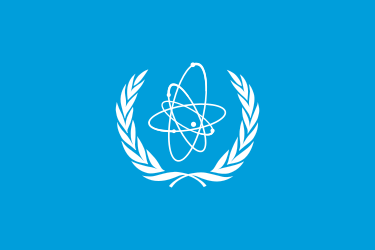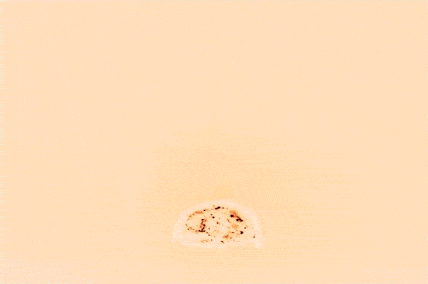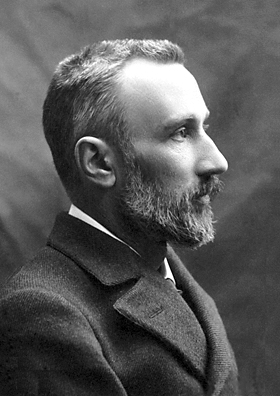Com o incremento da proliferação nuclear na década de 90, as tarefas da AIEA passaram a incluir as inspeções e investigações de suspeitas violações do Tratado de Não Proliferação Nuclear sob mandato das Nações Unidas; contudo, caso encontre indícios de uso militar em programas que inspeciona, apenas poderá reportá-los ao Conselho de Segurança das Nações Unidas, que detém o exclusivo de medidas coercivas. A AIEA mantém, como um dos seus instrumentos, o International Nuclear Information System (INIS), uma base de dados sobre a utilização pacífica da energia nuclear.
terça-feira, julho 29, 2025
A Agência Internacional de Energia Atómica surgiu há 68 anos
Postado por
Fernando Martins
às
06:08
0
bocas
![]()
Marcadores: Agência Internacional de Energia Atómica, AIEA, energia nuclear
quarta-feira, julho 16, 2025
O primeiro teste nuclear foi há oitenta anos...
Postado por
Fernando Martins
às
00:08
0
bocas
![]()
Marcadores: energia nuclear, II Grande Guerra, II Guerra Mundial, Projecto Manhattan, Trinity, USA
quinta-feira, julho 10, 2025
Os Serviços Secretos francese assassinaram o fotógrafo Fernando Pereira e afundaram o Rainbow Warrior há quarenta anos...
Postado por
Fernando Martins
às
00:40
0
bocas
![]()
Marcadores: assassinos, Ecologia, energia nuclear, Fernando Pereira, França, Greenpeace, Nova Zelândia, Rainbow Warrior, Serviços Secretos, vergonha
quinta-feira, maio 15, 2025
Pierre Curie nasceu há 166 anos
Pierre Curie (Paris, 15 de maio de 1859 - Paris, 19 de abril de 1906) foi um físico francês, pioneiro no estudo da cristalografia, magnetismo, piezoeletricidade e radioatividade.
Postado por
Fernando Martins
às
16:06
0
bocas
![]()
Marcadores: cristalografia, energia nuclear, magnetismo, Marie Curie, Pierre Curie, Prémio Nobel, radioactividade
sábado, abril 26, 2025
O desastre de Chernobil foi há 39 anos...
Boa tarde, camaradas. Todos vocês sabem que houve um inacreditável erro – o acidente na central nuclear de Chernobil. Ele afetou duramente o povo soviético, e chocou a comunidade internacional. Pela primeira vez, nós nos confrontámos com a força real da energia nuclear, fora de controle.
A evacuação de Pripiat começou antes da União Soviética reconhecer formalmente o acidente. Na manhã de 28 de abril, os níveis de radiação ficaram tão altos que foram detetados na Central nuclear de Forsmark, na Suécia, a mais de mil quilómetros de distância de Chernobil. Os trabalhadores de Forsmark reportaram o caso à Autoridade Sueca de Segurança Radiológica, que determinou que a radiação fora originada noutro lugar. No mesmo dia, o governo sueco contactou a liderança política soviética em Moscovo, perguntando se houve algum acidente nuclear no território da União Soviética. Os soviéticos inicialmente negaram qualquer incidente, mas quando os suecos sugeriram que iriam registar um alerta oficial junto da Agência Internacional de Energia Atómica, o governo soviético admitiu ao mundo o acidente que aconteceu em Chernobil.
A princípio, os soviéticos afirmaram que o acidente tinha sido
"pequeno", mas após eles terem evacuado cem mil pessoas da região, a comunidade internacional finalmente passou a tomar conhecimento da magnitude da situação.
Às 21.02 de 28 de abril, o governo soviético emitiu, em rede nacional
de televisão, o seu primeiro pronunciamento oficial sobre o desastre. O
anúncio tardio durou aproximadamente 20 segundos e foi lido no programa
de TV Vremya:
"Houve um acidente na Central Nuclear de Chernobil. Um dos reatores
nucleares foi danificado. Os efeitos do acidente estão sendo remediados.
Tem sido dada assistência para as pessoas afetadas. Foi criada uma
comissão de investigação." Esta foi toda a mensagem. A agência de notícias TASS então discutiu sobre o Acidente de Three Mile Island e outros desastres nucleares em solo americano, um exemplo comum da tática soviética conhecida como whataboutism (uma versão da falácia do Tu quoque).
Contudo, o anúncio de que uma comissão de gestão de crise havia sido
criada indicou, para observadores externos, a seriedade do acidente,
e subsequentes mensagens foram substituídas por música clássica, um
método comum para preparar o público para o anúncio de uma tragédia.
Postado por
Fernando Martins
às
00:39
0
bocas
![]()
Marcadores: acidente nuclear, acidente nuclear de Chernobil, Bielorrússia, energia nuclear, Gorbachev, Rússia, Ucrânia, URSS
sábado, abril 19, 2025
Pierre Curie morreu há 119 anos...
Pierre Curie (Paris, 15 de maio de 1859 - Paris, 19 de abril de 1906) foi um físico francês, pioneiro no estudo da cristalografia, magnetismo, piezoeletricidade e radioatividade.
Postado por
Fernando Martins
às
01:19
0
bocas
![]()
Marcadores: cristalografia, energia nuclear, magnetismo, Marie Curie, Pierre Curie, Prémio Nobel, radioactividade
segunda-feira, julho 29, 2024
A Agência Internacional de Energia Atómica faz hoje 67 anos
Com o incremento da proliferação nuclear na década de 90, as tarefas da AIEA passaram a incluir as inspeções e investigações de suspeitas violações do Tratado de Não Proliferação Nuclear sob mandato das Nações Unidas; contudo, caso encontre indícios de uso militar em programas que inspeciona, apenas poderá reportá-los ao Conselho de Segurança das Nações Unidas, que detém o exclusivo de medidas coercivas. A AIEA mantém, como um dos seus instrumentos, o International Nuclear Information System (INIS), uma base de dados sobre a utilização pacífica da energia nuclear.
Postado por
Fernando Martins
às
06:07
0
bocas
![]()
Marcadores: Agência Internacional de Energia Atómica, AIEA, energia nuclear
terça-feira, julho 16, 2024
O primeiro teste nuclear foi há 79 anos...
Postado por
Fernando Martins
às
07:09
0
bocas
![]()
Marcadores: energia nuclear, II Grande Guerra, II Guerra Mundial, Projecto Manhattan, Trinity, USA
quarta-feira, julho 10, 2024
Uns Serviços Secretos assassinaram o fotógrafo Fernando Pereira e afundaram o Rainbow Warrior há 39 anos...
Postado por
Fernando Martins
às
00:39
0
bocas
![]()
Marcadores: assassinos, Ecologia, energia nuclear, Fernando Pereira, França, Greenpeace, Nova Zelândia, Rainbow Warrior, Serviços Secretos, vergonha
quarta-feira, maio 15, 2024
Pierre Curie nasceu há 165 anos
Pierre Curie (Paris, 15 de maio de 1859 - Paris, 19 de abril de 1906) foi um físico francês, pioneiro no estudo da cristalografia, magnetismo, piezoeletricidade e radioatividade.
Postado por
Fernando Martins
às
16:50
0
bocas
![]()
Marcadores: cristalografia, energia nuclear, magnetismo, Marie Curie, Pierre Curie, Prémio Nobel, radioactividade
sexta-feira, abril 26, 2024
O desastre de Chernobil foi há 38 anos...
Boa tarde, camaradas. Todos vocês sabem que houve um inacreditável erro – o acidente na central nuclear de Chernobil. Ele afetou duramente o povo soviético, e chocou a comunidade internacional. Pela primeira vez, nós nos confrontámos com a força real da energia nuclear, fora de controle.
A evacuação de Pripiat começou antes da União Soviética reconhecer formalmente o acidente. Na manhã de 28 de abril, os níveis de radiação ficaram tão altos que foram detetados na Central nuclear de Forsmark, na Suécia, a mais de mil quilómetros de distância de Chernobil. Os trabalhadores de Forsmark reportaram o caso para a Autoridade Sueca de Segurança Radiológica, que determinou que a radiação se originou noutro lugar. No mesmo dia, o governo sueco contactou a liderança política soviética em Moscovo perguntando se houve algum acidente nuclear no território da União Soviética. Os soviéticos inicialmente negaram qualquer incidente, mas quando os suecos sugeriram que iriam registar um alerta oficial junto à Agência Internacional de Energia Atómica, o governo soviético admitiu ao mundo o acidente que aconteceu em Chernobil.
A princípio, os soviéticos afirmaram que o acidente tinha sido
"pequeno", mas após eles terem evacuado cem mil pessoas da região, a comunidade internacional finalmente passou a tomar conhecimento da magnitude da situação.
Às 21.02 de 28 de abril, o governo soviético emitiu, em rede nacional
de televisão, seu primeiro pronunciamento oficial sobre o desastre. O
anúncio tardio durou aproximadamente 20 segundos e foi lido no programa
de TV Vremya:
"Houve um acidente na Usina Nuclear de Chernobil. Um dos reatores
nucleares foi danificado. Os efeitos do acidente estão sendo remediados.
Tem sido dada assistência para as pessoas afetadas. Foi criada uma
comissão de investigação." Esta foi toda a mensagem. A agência de notícias TASS então discutiu sobre o Acidente de Three Mile Island e outros desastres nucleares em solo americano, um exemplo comum da tática soviética conhecida como whataboutism (uma versão da falácia do Tu quoque).
Contudo, o anúncio de que uma comissão de gestão de crise havia sido
criada indicou, para observadores externos, a seriedade do acidente,
e subsequentes mensagens foram substituídas por música clássica, um
método comum para preparar o público para o anúncio de uma tragédia.
Postado por
Fernando Martins
às
00:38
0
bocas
![]()
Marcadores: acidente nuclear, acidente nuclear de Chernobil, Bielorrússia, energia nuclear, Gorbachev, Rússia, Ucrânia, URSS
sexta-feira, abril 19, 2024
Pierre Curie morreu há 118 anos...
Pierre Curie (Paris, 15 de maio de 1859 - Paris, 19 de abril de 1906) foi um físico francês, pioneiro no estudo da cristalografia, magnetismo, piezoeletricidade e radioatividade.
Postado por
Fernando Martins
às
01:18
0
bocas
![]()
Marcadores: cristalografia, energia nuclear, magnetismo, Marie Curie, Pierre Curie, Prémio Nobel, radioactividade
sábado, julho 29, 2023
A Agência Internacional de Energia Atómica faz hoje 66 anos
Com o incremento da proliferação nuclear na década de 90, as tarefas da AIEA passaram a incluir as inspeções e investigações de suspeitas violações do Tratado de Não Proliferação Nuclear sob mandato das Nações Unidas; contudo, caso encontre indícios de uso militar em programas que inspeciona, apenas poderá reportá-los ao Conselho de Segurança das Nações Unidas, que detém o exclusivo de medidas coercivas. A AIEA mantém, como um dos seus instrumentos, o International Nuclear Information System (INIS), uma base de dados sobre a utilização pacífica da energia nuclear.
Postado por
Fernando Martins
às
06:06
0
bocas
![]()
Marcadores: Agência Internacional de Energia Atómica, AIEA, energia nuclear
domingo, julho 16, 2023
O primeiro teste nuclear foi há 78 anos...
Postado por
Fernando Martins
às
07:08
0
bocas
![]()
Marcadores: energia nuclear, II Grande Guerra, II Guerra Mundial, Projecto Manhattan, Trinity, USA
segunda-feira, julho 10, 2023
Os Serviços Secretos franceses assassinaram o fotógrafo Fernando Pereira e afundaram o Rainbow Warrior há 38 anos...
Postado por
Fernando Martins
às
00:38
0
bocas
![]()
Marcadores: assassinos, Ecologia, energia nuclear, Fernando Pereira, França, Greenpeace, Nova Zelândia, Rainbow Warrior, Serviços Secretos, vergonha










